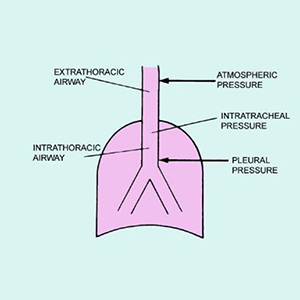Use of flow volume curve to evaluate large airway obstruction

Submitted: May 25, 2021
Accepted: January 16, 2022
Published: February 4, 2022
Accepted: January 16, 2022
Abstract Views: 2316
PDF: 1330
Publisher's note
All claims expressed in this article are solely those of the authors and do not necessarily represent those of their affiliated organizations, or those of the publisher, the editors and the reviewers. Any product that may be evaluated in this article or claim that may be made by its manufacturer is not guaranteed or endorsed by the publisher.
All claims expressed in this article are solely those of the authors and do not necessarily represent those of their affiliated organizations, or those of the publisher, the editors and the reviewers. Any product that may be evaluated in this article or claim that may be made by its manufacturer is not guaranteed or endorsed by the publisher.
Similar Articles
- T. Kontakiotis, N. Manolakoglou, F. Zoglopitis, D. Iakovidis, L. Sacas, A. Papagiannis, A. Mandrali, D. Papakosta, P. Argyropoulou, D. Bouros, Epidemiologic trends in lung cancer over two decades in Northern Greece: an analysis of bronchoscopic data , Monaldi Archives for Chest Disease: Vol. 71 No. 4 (2009): Pulmonary series
- R. Agarwal, A. Khan, A.N. Aggarwal, D. Gupta, Is the SMART approach better than other treatment approaches for prevention of asthma exacerbations? A meta-analysis , Monaldi Archives for Chest Disease: Vol. 71 No. 4 (2009): Pulmonary series
- I. Hawrylkiewicz, P. Sliwinski, D. Górecka, R. Plywaczewski, J. Zielinski, Pulmonary haemodynamics in patients with OSAS or an overlap syndrome , Monaldi Archives for Chest Disease: Vol. 61 No. 3 (2004): Pulmonary series
- K. Karkoulias, M. Tsiamita, E. Prodromaki, K. Spiropoulos, An unusual presentation of tuberculosis , Monaldi Archives for Chest Disease: Vol. 61 No. 2 (2004): Pulmonary series
- G. Valli, A. Fedeli, R. Antonucci, P. Paoletti, P. Palange, Water and sodium imbalance in COPD patients , Monaldi Archives for Chest Disease: Vol. 61 No. 2 (2004): Pulmonary series
- G. Callegari, C. Fracchia, Lung Transplantation and Endoscopic Issues , Monaldi Archives for Chest Disease: Vol. 75 No. 1 (2011): Pulmonary series
- B.T. Uskul, R. Baran, F.E. Turan, O. Sogukpinar, F. Aksoy, H. Turker, Endoscopic removal of a chondromatous hamartoma by bronchoscopic electrosurgical snare and argon plasma coagulation , Monaldi Archives for Chest Disease: Vol. 67 No. 4 (2007): Pulmonary series
- Elena Costanza dal Piaz, Giovanni Cioffi, Federica Ognibeni, Andrea Dalbeni, Alessandro Giollo, Giovanni Orsolini, Davide Gatti, Luca Idolazzi, Carlo Stefenelli, Maurizio Rossini, Ombretta Viapiana, Incidence and predictors of new onset left ventricular diastolic dysfunction in asymptomatic patients with rheumatoid arthritis without overt cardiac disease , Monaldi Archives for Chest Disease: Vol. 89 No. 3 (2019)
- M.L. Bartoli, E. Bacci, S. Cianchetti, F.L. Dente, A. Di Franco, B. Vagaggini, M. De Santis, E. Masino, P.L. Paggiaro, Some factors influencing quality of spontaneous or induced sputum for inflammatory cell analysis , Monaldi Archives for Chest Disease: Vol. 67 No. 2 (2007): Pulmonary series
- O. Resta, P. Carratù, A. Depalo, T. Giliberti, M. Ardito, O. Marrone, G. Insalaco, Effects of fixed compared to automatic CPAP on sleep in Obstructive Sleep Apnoea Syndrome , Monaldi Archives for Chest Disease: Vol. 61 No. 3 (2004): Pulmonary series
<< < 14 15 16 17 18 19 20 21 22 23 > >>
You may also start an advanced similarity search for this article.

 https://doi.org/10.4081/monaldi.2022.1947
https://doi.org/10.4081/monaldi.2022.1947





